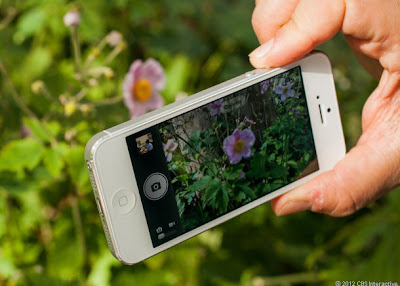The good: The iPhone 5 adds everything we wanted in the iPhone 4S: 4G LTE, a longer, larger screen, free turn-by-turn navigation, and a faster A6 processor. Plus, its top-to-bottom redesign is sharp, slim, and feather-light.
The bad: Apple Maps feels unfinished and buggy; Sprint and Verizon models can't use voice and data simultaneously. The smaller connector renders current accessories unusable without an adapter. There's no NFC, and the screen size pales in comparison to jumbo Android models.
The bottom line: The iPhone 5 completely rebuilds the iPhone on a framework of new features and design, addressing its major previous shortcomings. It's absolutely the best iPhone to date, and it easily secures its place in the top tier of the smartphone universe.
The iPhone 5 is the iPhone we've wanted since 2010, adding long-overdue upgrades like a larger screen and faster 4G LTE in a razor-sharp new design. This is the iPhone, rebooted.
The new design is flat-out lovely, both to look at and to hold, and it's hard to find a single part that hasn't been tweaked from the iPhone 4S. The iPhone 5 is at once completely rebuilt and completely familiar.
I've had the chance to use the iPhone 5 for nearly a week
, and have been using it for nearly anything I can think of. Is it as futuristic or as exciting as the iPhone 4 or the original iPhone? No. Does this change the smartphone game? No. Other smartphones beat it on features here and there: if you want a larger screen, go with a Samsung Galaxy S3. If you want better battery life, go with a Droid Razr Maxx.But, if you want a great, all-around, beautifully engineered smartphone .
What's different?
Look at our review of last year's iPhone 4S, where we said, "Even without 4G and a giant screen, this phone's smart(ass) voice assistant, Siri, the benefits of iOS 5, and its spectacular camera make it a top choice for anyone ready to upgrade."
Well, guess what? Now it has 4G LTE and...well, maybe not a giant screen, but a larger screen. That's not all, though: the already great camera's been subtly improved, speakerphone and noise-canceling quality has been tweaked, and -- as always -- iOS 6 brings a host of other improvements, including baked-in turn-by-turn navigation, a smarter Siri, and Passbook, a location-aware digital wallet app for storing documents like gift cards, boarding passes, and tickets.
The question is: a full year later, is that enough? For me, it is. I don't want much more in my smartphone. Sure, I'd love a new magical technology to sink my teeth into, but not at the expense of being useful. Right now, I'm not sure what that technology would even be.
Like every year in the iPhone's life cycle, a handful of important new features take the spotlight. This time, 4G, screen size, and redesign step to the top.
You've gotten the full rundown already, most likely, on the various ins and outs of this phone, or if you haven't, I'll tell you about them below in greater detail. Here's what I noticed right away, and what made the biggest impression on me.
First off, you're going to be shocked at how light this phone is. It's the lightest iPhone, even though it's longer and has a bigger screen. After a few days with it, the iPhone 4S will feel as dense as lead.
Secondly, the screen size lengthening is subtle, but, like the Retina Display, you're going to have a hard time going back once you've used it. The extra space adds a lot to document viewing areas above the keyboard, landscape-oriented video playback (larger size and less letterboxing), and home-page organizing (an extra row of icons/folders). Who knows what game developers will dream up, but odds are that extra space on the sides in landscape mode will be handily used by virtual buttons and controls.
Third, this phone will make your home Wi-Fi look bad. Or at least, it did that to mine. Owners of other 4G LTE phones won't be shocked, but iPhone owners making the switch will start noticing that staying on LTE versus Wi-Fi might actually produce faster results...of course, at the expense of expensive data rates. I hopped off my work Wi-Fi and used AT&T LTE in midtown Manhattan to make a FaceTime call to my wife because the former was slowing down. LTE, in my tests, ran anywhere from 10 to 20Mbps, which is up to twice as fast as my wireless router's connection at home.
Using your iPhone 5 as a personal hot spot for a laptop or other device produces some of the same strong results as the third-gen iPad...and it's smaller. Of course, make sure you check on your tethering charges and data usage fees, but my MacBook Air did a fine job running off the LTE data connection at midday.
The look: Thin, metal, light as heck
You know its look, even if the look has been subtly transformed over the years: circular Home button, pocketable rectangle, familiarly sized screen. Can that design be toyed with, transformed a little, changed?
From left: The Lumia 900, iPhone 5, Samsung Galaxy S3.
The camera
Something on the iPhone 5 has to not be new, right? Well, even the rear iSight camera's been tweaked, but not quite as much as other features. It's still an 8-megapixel camera, but there's a new sapphire-crystal lens, and improved hardware enabling features like dynamic low-lighting adjustment, image stabilization on the 1080p video camera, and the capability to take still shots while shooting video.













No comments:
Post a Comment